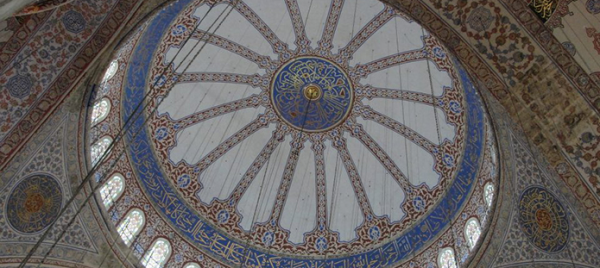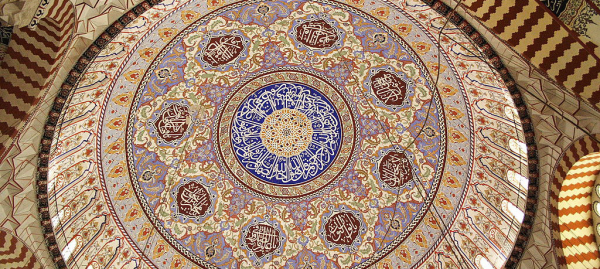RE140 - The Worlds of Islam
An historical and thematic introduction to Islamic traditions from the seventh century CE to the present day, focusing on fundamental texts and practices. Topics include the Abrahamic context of Islam, the Prophet Muhammad, the Qur'an, the rise of sectarian movements (Shi'a and Sunni), ritual and pilgrimage, Islamic law, Sufism, women in Islam, the challenges of modernity, and Islam in America. Meets the Critical Perspectives: Global Cultures requirement. Meets the Critical Learning: HP requirement. Meets the Critical Learning: SHB requirement.
Degree requirement — Critical Learning: HP, Critical Learning: SHB, Critical Perspectives: G
1 unit — Wright
Previously Featured Offering



Topics include the Abrahamic context of Islam, the Prophet Muhammad, the Qur'an, the rise of sectarian movements (Shi'a and Sunni), ritual and pilgrimage, Islamic law, Sufism, women in Islam, the challenges of modernity, and Islam in America. (Meets the Critical Perspectives: Diverse Cultures and Critiques requirement.)
In four sentences, the British Islamicist Julian Baldick has described the Islamic tradition as a whole through insightful comparisons to Christianities (East and West) and rabbinic Judaism, revealing deep kinship and also differences:
Now Islam recognizes Jesus as the Christ, the Messiah, and thus is technically a form of Christianity. However, it sees him [Jesus] as a man and a prophet, not as God incarnate or God's Son. It has no church or priesthood. Instead, there are jurists (in effect rabbis) and Sufi “elders” (very like the startsy of Russian Orthodox monasticism), who provide advice to the faithful and answer their queries (Julian Baldick, Imaginary Muslims: The Uwaysi Sufis of Central Asia, London: I.B. Tauris, 1993, p. 3).
While no broad generalizations regarding any set of phenomena as complex as a religious tradition that has been in existence for 15 centuries and claims, at present, roughly 1.5 billion adherents throughout the world can be considered adequate, they do offer points from which to begin scholarly inquiry. This introductory course on Islam begins with these observations and proceeds as a meditation upon them.
The approach to the subject is both thematic and historical. That is to say, we are not interested in the truth-value of any dogmatic assertion so much as the historical context in which such assertions are made and the meaning that they have for historical actors within those contexts. The non-sectarian academic study of religion is historical, comparative, and theory-driven. Those who engage in theological speculation are often the subject of our inquiries, but religious studies is not theology: instead, it is a kind of socio-poetics—a humanistic adventure among texts.
Consequently, in meditating upon the aforementioned generalizations we may wish to ask ourselves questions such as the following:
- Why might a faith community embrace Jesus of Nazareth as the Jewish Messiah and yet refrain from regarding him as “God incarnate”?
- How does a faith community without a church or priesthood organize itself and function?
- What is a rabbi and why might it be appropriate to compare Muslim jurists to rabbis?
- What is a startsy of Russian Orthodoxy? What is a Sufi Shaykh? Why does Julian Baldick find these two religious functionaries comparable?
Once again, our interest is not theological but humanistic. In the words of one of the most important living theoreticians of religious studies, Jonathan Z. Smith: “What we study when we study religion is one mode of constructing worlds of meaning, worlds within which men [and women] find themselves and in which they choose to dwell. What we study is the passion and drama of man discovering the truth of what it is to be human.” J. Z. Smith, Map Is Not Territory, Chicago: University of Chicago Press (1993), pp. 290-291.
Offerings
| Term | Block | Title | Instructor | Location | Student Limit/Available | Updated |
|---|---|---|---|---|---|---|
| Fall 2024 | Block 4 | The Worlds of Islam | Peter Wright | Armstrong Hall 342 | 25 / 16 | 08/11/2025 |
| Fall 2025 | Block 2 | The Worlds of Islam | Peter Wright | TBA | 25 / 14 | 08/11/2025 |



